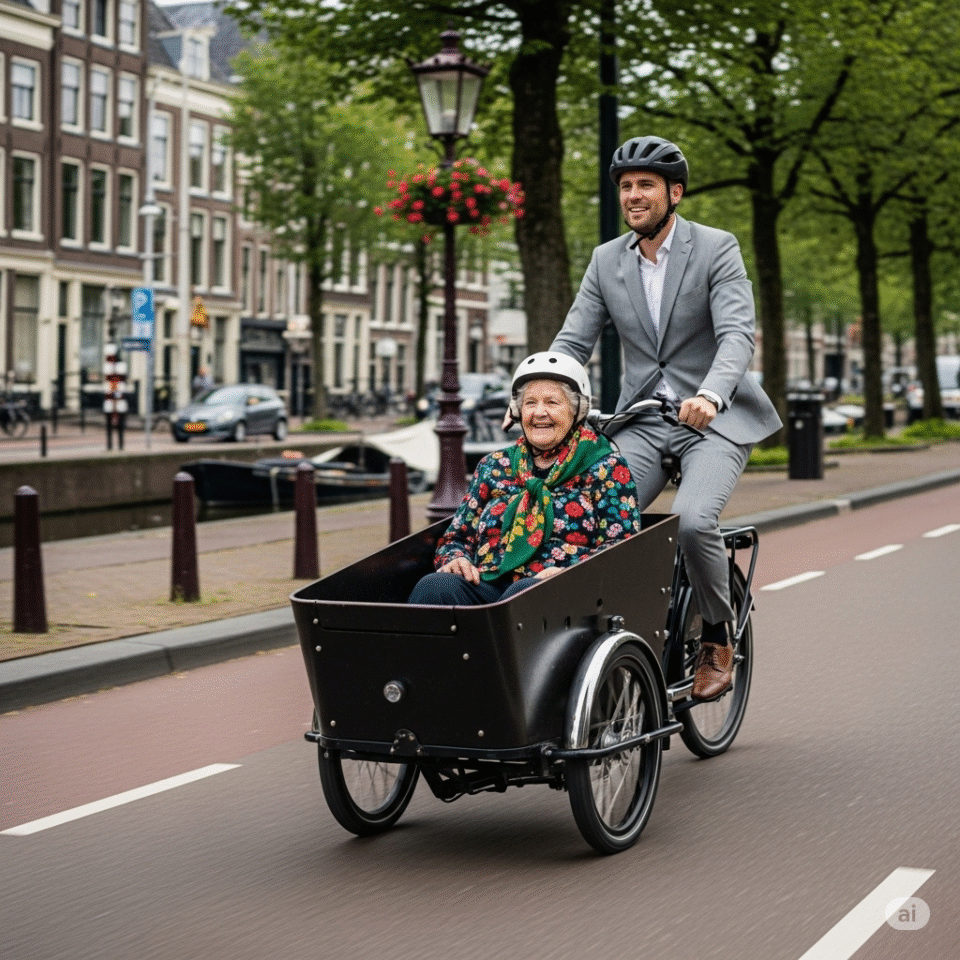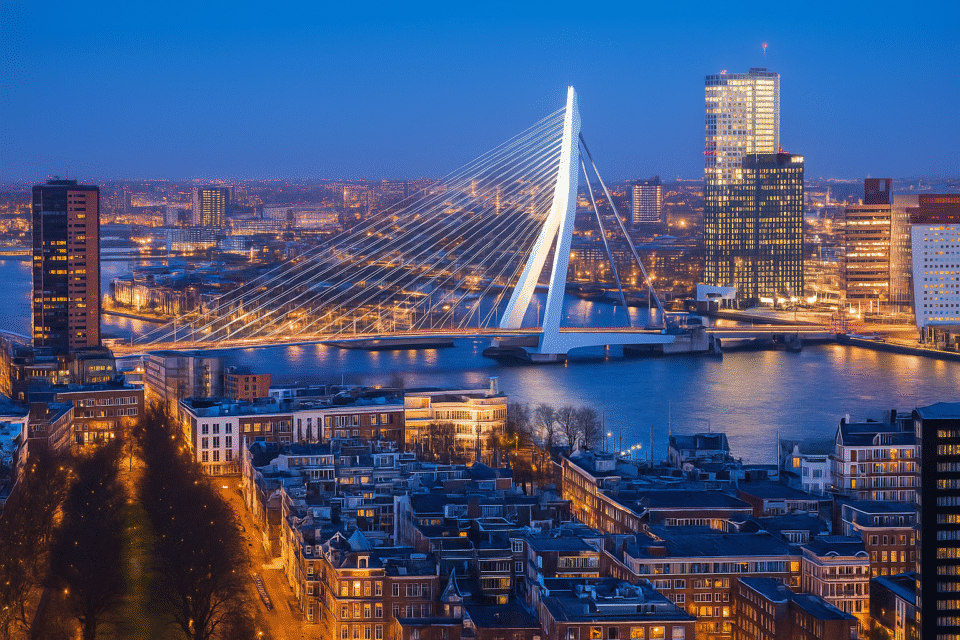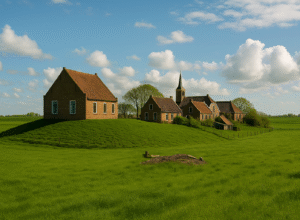“That Bike Has a Whole Daycare in It”
The Netherlands has more bicycles than people, but it’s not just the quantity that surprises Americans—it’s the variety. Perhaps none is more quintessentially Dutch than the mighty bakfiets, a transportation solution that will have you questioning everything you thought you knew about getting around.
The first time I saw one, I nearly walked into a canal.
There I was, fresh off the plane in Amsterdam, jet-lagged and starved after 11 hours of permanent relocation, when a petite Dutch woman pedaled past me steering what looked like a wheelbarrow welded to a bicycle. Inside the front “bucket” were two toddlers, a grocery bag, and what appeared to be a small dog. All of them bounced along while she navigated traffic with the calm confidence of someone driving a tank.
“What the Dutch is THAT?” I muttered (although it was a little more vulgar than that in reality), as a second and third contraption passed by, each carrying various combinations of children, groceries, and household items that Americans would instinctively load into an SUV. I even saw a smiling grandma in one!
Welcome to the Netherlands, where the bakfiets (pronounced “bahk-feets”) has replaced the minivan as the default vehicle of family life.
What Even Is a Bakfiets?
Literally translated as “box bike,” the bakfiets is exactly what it sounds like: a bicycle with a large cargo box attached, typically at the front (though rear-box versions exist too). The box is usually wooden or heavy-duty plastic and can carry loads up to 80 kilograms (about 175 pounds). That’s enough for kids, groceries, furniture, or all three at once.
They come in two main varieties. The “Long John” style has two wheels and requires a bit of balance to steer. The trike version has three wheels, which offers more stability at the cost of maneuverability. More and more, you’ll see electric-assist models around Dutch cities. They help with hills (well, metaphorical ones) and make it possible to carry heavy cargo without showing up to school drop-off looking like you just finished the Tour de France.
“But wouldn’t it be easier to just… drive a car?” asks my American brain, still wired for strip malls and Costco runs.
Oh, sweet summer child. You have so much to learn.
Why Do the Dutch Love These Things?
The bakfiets isn’t just a quirky Dutch design. It’s a practical, elegant solution that makes total sense once you understand the context.
The Netherlands is flat. Like, comically flat. Most of the country looks like it was ironed. That makes it easy to pedal even when you’re hauling your entire household across town.
Cities here are made for bikes. With protected bike lanes, dedicated bike traffic signals, and bike parking at nearly every shop or school, riding a bakfiets is often faster than driving—especially when you factor in the medieval parking situation in most Dutch city centers.
Owning a car is expensive and inconvenient. Between road taxes, gas prices, parking fees, and narrow cobbled streets, the Dutch have every incentive to avoid driving unless absolutely necessary. A bakfiets covers most of your daily errands.
The weather isn’t great, but it’s not terrible either. Winters are mild and snow is rare. Rain happens often, but many bakfietsen have built-in covers to keep kids and groceries dry.
And maybe most surprising: the bakfiets cuts across class lines. In the U.S., biking your kids around can carry weird social signals—either you’re broke or you’re making a big green statement. In the Netherlands, it’s just what people do. I’ve seen a woman in a tailored suit and red lipstick pedaling her bakfiets with two kids and a cello strapped in the front. While brushing her teeth. No one batted an eye. (Except me.)
A Moment of Confusion
I’ll never forget standing in line at the bakery in The Hague and watching a dad outside load four kids into a bakfiets—one baby in a car seat, two toddlers side by side, and one kindergartener hanging off the front like a hood ornament. The bike wobbled slightly as he climbed on. Then he calmly adjusted his scarf, rang the bell, and sailed off like a Viking captain steering his longship through a sea of stroopwafels and cyclists.
It was absurd. It was majestic. It was perfectly Dutch.
What It Says About the Netherlands
The bakfiets reveals a lot more than just transport preferences. It says something about Dutch life itself.
Dutch parenting encourages independence and mobility. Kids are exposed to the world early, not strapped into climate-controlled SUVs. They experience the city up close: the weather, the smells, the sounds, the daily rhythms of normal life.
Public space is trusted. Dutch cities treat shared urban space as livable, safe, and communal. You’re not weird for bringing your baby into public on a bike. You’re normal.
Sustainability is assumed, not declared. In the U.S., ditching your car is often seen as a bold political act. In the Netherlands, it’s just common sense. Why burn gas when your legs work?
Function wins over flash. The bakfiets looks ridiculous to outsiders. But like so many Dutch things—wooden shoes, bitterballen, stroopwafels—it works exactly as intended.
And honestly, after seeing enough bakfietsen on the street, you stop noticing them. They become part of the background, like canals or tulips or slightly alarming directness in small talk.
Would You Ride One?
I finally gave one a test drive myself at a bike shop while they were tuning up my normal bike. The shop owner gave me a knowing look and said, “Let the bike do the work. Americans always try too hard.”
He was right. I wobbled like a newborn giraffe at first, but once I stopped overcorrecting, the ride smoothed out. It felt sturdy. Purposeful. Oddly empowering.
Then came the price tag. A decent manual bakfiets runs between €2,000 and €3,000. Add an electric motor and it can top €4,000. That’s a lot for a bike. But then again, it’s not a bike. It’s a vehicle. And it’s still cheaper than a second car, which is how most Dutch families seem to justify it.
Would I trust myself to ride one with a baby inside? Maybe not yet. But I get it now. I really do. The appeal isn’t just practicality. It’s freedom—freedom from gas stations, from car seats, from the endless logistics of driving. It’s simplicity that works.
The Box-Bike Philosophy
The bakfiets is one of those things that seems ridiculous… until it doesn’t. Until it becomes normal. Maybe even beautiful.
It’s a perfect metaphor for Dutch culture: thoughtful, compact, and designed to solve real-world problems without making a fuss. Where Americans tend to fix things by adding—more horsepower, more features, more space—the Dutch often fix things by removing what isn’t necessary. The result is cleaner, quieter, and surprisingly elegant.
You don’t have to buy a bakfiets to understand its lesson. But next time you’re stuck in traffic, shuttling groceries a mile away in a two-ton car, it might cross your mind.
What would the Dutch do?
Probably something simple, smart, and just a little absurd-looking—at least until you try it yourself.
About What the Dutch is That?
Why are windmills, tulips, and wooden shoes so deeply tied to the Dutch identity? What’s real, what’s myth, and what’s been quietly misunderstood?
What the Dutch is That? is a series that unpacks how certain things became synonymous with the Netherlands—and what they reveal about the people, the land, and the rhythm of life here. Not just symbols, but stories. Not just icons, but origins.








